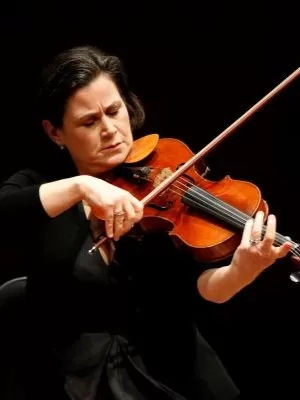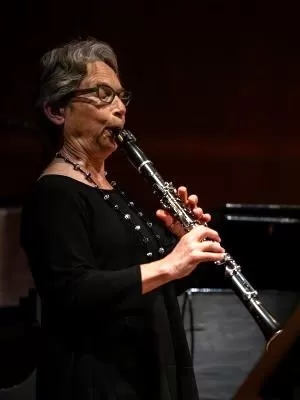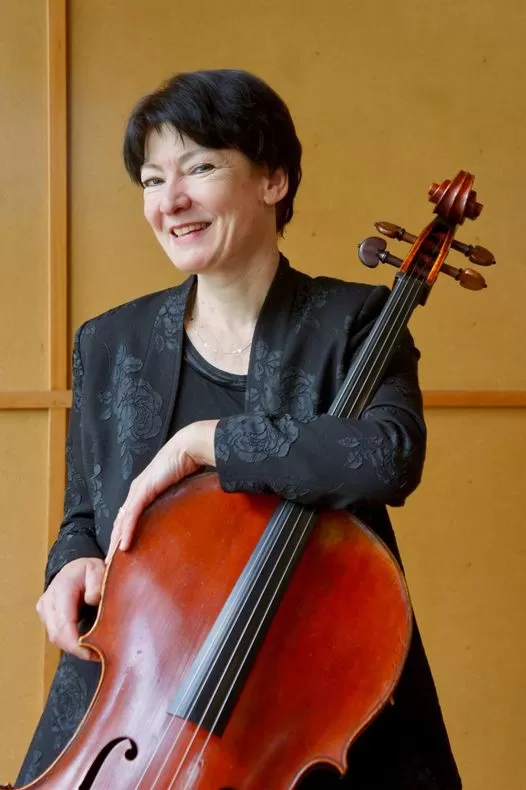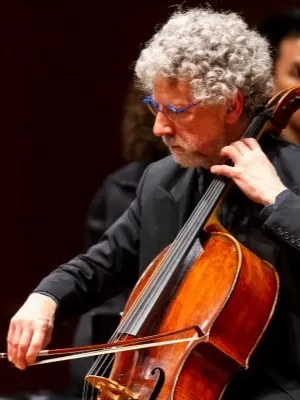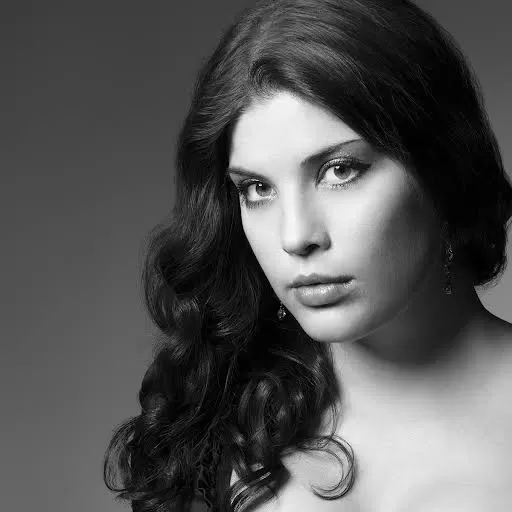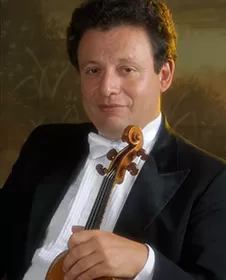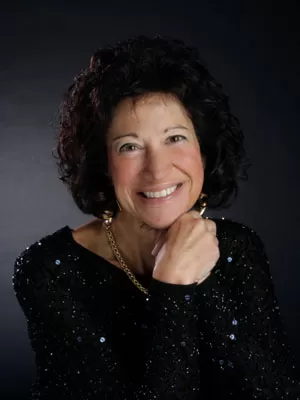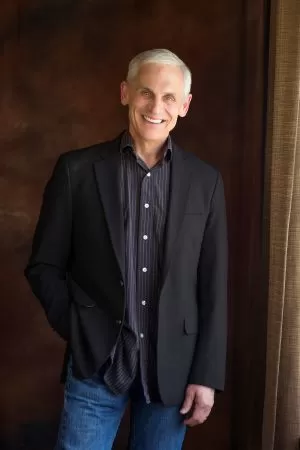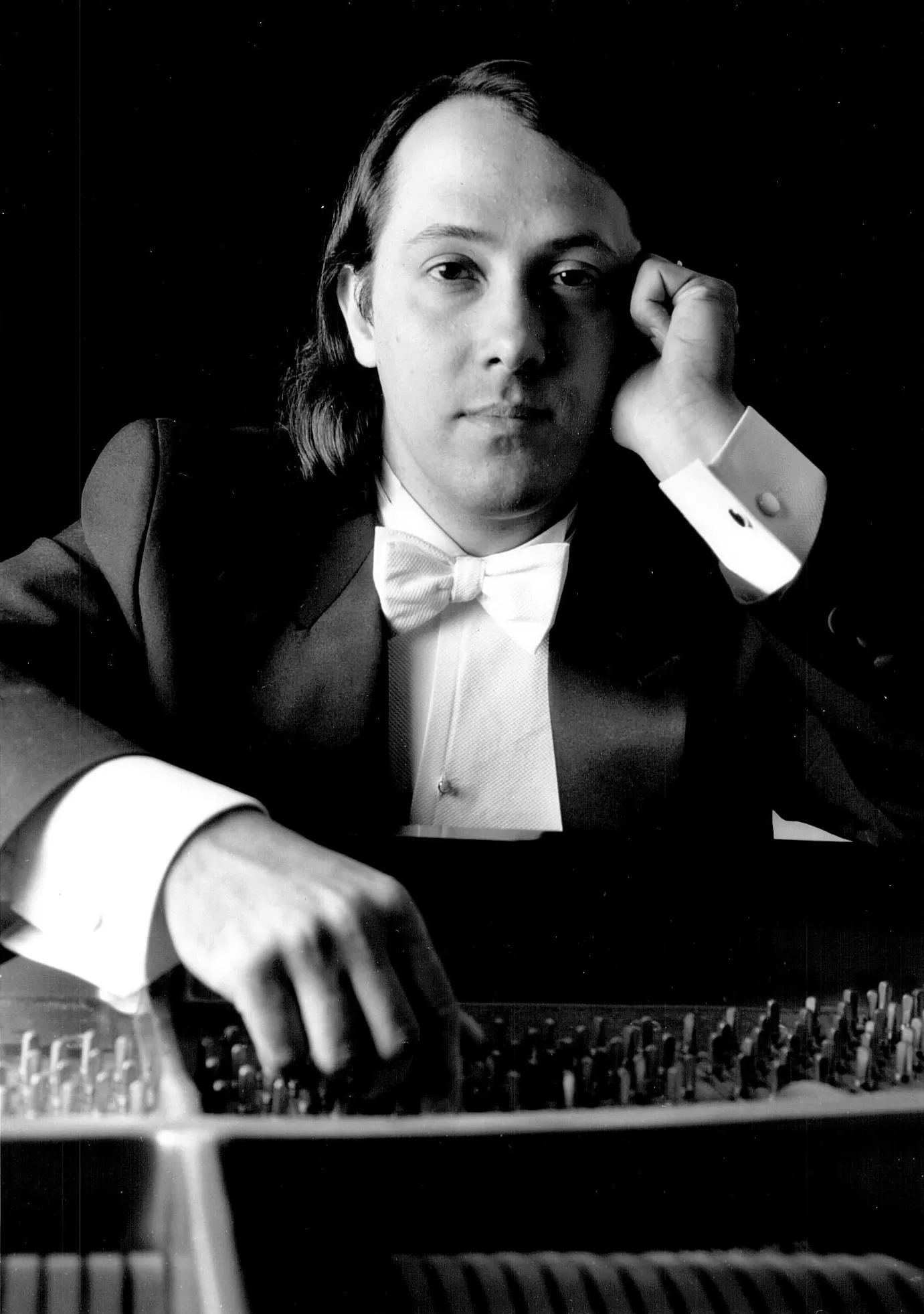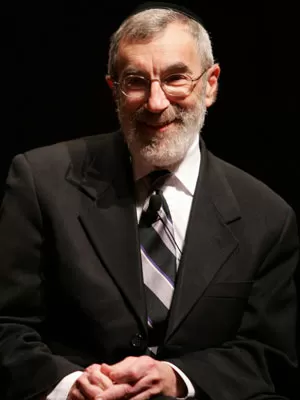Nov 9, 2009 - 12:00 pm
Cantillations
A concert to commemorate the 71st anniversary of Kristallnacht
Monday, November 9
6:45 p.m. Meet the Composer: Gigi Yellen interviews Paul Schoenfield
7:30 p.m. Concert
“The Nazis came close to expunging Jewish composer Pavel Haas from the history books, yet his music feels like something one has always known.”—Telegraph
This fall’s concert combines evocative Holocaust-era music with works by two brilliant composers of today. Czech composer Pavel Haas was part of the remarkable creative resistance at Terezín, and we perform his String Quartet No. 1, a masterpiece of counterpoint. You’ll hear works by two Hungarian composers who perished at Nazi hands: Sándor Vándor’s impressionistic Air for cello and piano, and László Weiner’s sparkling Duo for violin and viola. You’ll be captivated by the Yiddish art songs of the Ukrainian composer Lazar Weiner, a pioneer of that form, sung by Seattle Opera Young Artist Megan Hart. Contemporary Israeli-born composer Ofer Ben-Amots’soulful Cantillations blends Judaic themes and cantorial styles with contemporary effects. Paul Schoenfield’s powerful Sparks of Glory inspires listeners with amazing stories of spiritual courage.
Ofer Ben-Amots
Cantillations (1997)
Laura DeLuca, clarinet Mara Finkelstein, cello
Pavel Haas
String Quartet No. 1, Op. 3 (1920)
Mikhail Shmidt, violin Leonid Keylin, violin
Susan Gulkis Assadi, viola Mara Finkelstein, cello
Sándor Vándor
Air
Walter Gray, cello Mina Miller, piano
László Weiner
Duo
Mikhail Shmidt, violin Susan Gulkis Assadi, viola
Lazar Weiner
Three Yiddish Art Songs
Megan Hart, soprano Mina Miller, piano
Paul Schoenfield
Sparks of Glory (1995)
Mikhail Shmidt, violin Laura DeLuca, clarinet
Walter Gray, cello Mark Salman, piano Erich Parce, narrator
About the Music
Cantillations (1997)
Ofer Ben Amots (b. Haifa 1955)
Ofer Ben Amots offers the following remarks: A commission from an international Ashkenaz conference, Cantillations, for clarinet and cello, is based on the solemn style of the Berlin-Frankfurt cantillations, preserving and revitalizing them in memorial of and tribute to the community, which nearly perished in the Holocaust. (The word “cantillations” usually describes small melodic patterns utilized in the chanting of the Hebrew Scriptures.) Stylistically, the duet blends Judaica, contemporary effects, and modernist tradition into a seamless unity. The work consists of two contrasting movements. An introductory section marked Tempo rubato, senza misura (without meter indication) opens with emotionally rhapsodic fluctuations of synagogue chant reminiscent of an ancient lamentation. Carefully written-out accelerandos and decelerandos, as well as conflicting tempi, give the effect of simultaneous improvisations while, in fact, retaining strict control at all times. The clarinet has the leading voice while the cello is “commenting” with recitative-like phrases. Then follows a more fluid movement (Allegro) titled The Voice of Ashkenaz, a dialogue of musical motifs and ideas. The short melodic fragments combine into a prolonged melodic phrase, which moves between the two instruments to create a large rondo form. Together the two movements present a transformation from disparity into harmony, from despair into hope, and from mourning into joy.
Ofer Ben Amots, composer, has studied at Tel Aviv University, the Conservatoire de Musique in Geneva, Switzerland, and the Hochschule für Musik in Detmold, Germany. Upon his arrival in the U.S. in 1987, Ben-Amots studied at the University of Pennsylvania, where he received his Ph.d. in music composition. Currently on the faculty of Colorado College, Dr. Ben-Amots is an associate professor in music composition and theory. He is the winner of the 1994 Vienna International Competition for Composers, the 1988 Kavannagh Prize, the Gold Award at South Africa’s 1993 Roodepoort International Competition, and, in 1999, the Aaron Copland Award and the Music Composition Artist Fellowship by the Colorado Council on the Arts. His chamber opera, Fool’s Paradise, had its premiere in Vienna during the 1994 festival Wien modern and subsequently was performed during the 1994-95 season of Operahaus Zürich.
String Quartet No. 1, Op. 3 (1920)
Pavel Haas (b. Brno 1899 - d. Auschwitz 1944)
Pavel Haas was likely the most gifted student of Czech composer Leoš Janáček. The son of a shoemaker, Haas did not begin his musical studies until his early teens, attending the music school of his hometown’s Philharmonic Society. After three years of army service, he joined the Conservatory and graduated to Janáček’s master class, becoming a star pupil. Over two productive decades, Haas would work on over fifty compositions, but he gave opus numbers to only eighteen. His varied oeuvre includes symphonic and choral works, lieder, chamber music, scores for cinema and theatre, and an opera, Šarlatán (Charlatan). Haas’ mature compositional voice combined a Stravinsky-like neo-Classicism with jazz, Czech folk themes and Jewish synagogue music. He completed his String Quartet No. 1 in 1920. A single movement with two complementary parts, the piece demonstrates an astonishing technical mastery of counterpoint. Haas was deported in 1941 to Terezín, where he joined fellow Czech-Jewish composers Viktor Ullmann, Gideon Klein, and Hans Krása. It was Klein who gave Haas music paper and encouraged him to compose and resist the depression that threatened to overwhelm him. Haas went on to write eight pieces while at Terezín. Haas, knowing his likely fate, had saved his non-Jewish wife and their daughter by divorcing. He was sent to his death at Auschwitz in October 1944.
Air
Sándor Vándor (b. 1901 Miskolc–d. 1945 Sopronánfalva)
In the decades following World War II, Hungarian conductor and composer Sándor Vándor was remembered mainly for the Budapest choir named in his honor. Yet Vándor was an influential voice in Hungarian music who promoted the work of Bartók and Kodály. While best known for his choral music, Vándor composed at least forty works that include orchestral, chamber and stage pieces. The son of a physician, Vándor rubbed elbows with Hungary’s literary elite as a child and went on to become fluent in seven languages. He was expelled from the Hungarian school system in 1920 after organizing a revolutionary student council. After musical studies in Leipzig, Vándor lived in Italy, where he worked as a vocal coach and conductor. Returning to Budapest, he led the choir that now bears his name from 1936 until late 1944, when he was sent by Hungarian Nazis to his death at the forced labor camp at Sopronánfalva, near the Austrian border. Only one of Vándor’s compositions – a piano work – was published during his lifetime, but many others have appeared posthumously.
Duo (1939)
Laszlo Weiner (b. 1916 Szombathely–d. 1944 Lukov)
A composition student of Kodály, Lászlo Weiner also studied piano and conducting at the Budapest Academy of Music. After the passage of laws that restricted appearances by Jewish musicians, Weiner was one of Hungary’s Jewish stage and musical stars who performed at events presented by the state-approved Jewish cultural organization OMIKE. Many of OMIKE’s concerts attracted non-Jewish critics who reviewed them in the general Hungarian press, and Weiner’s conducting and piano performances received considerable note. Weiner was deported in 1943 to the forced labor camp in Lukov, and murdered there the following year despite the attempt by his former teacher Kodály to intercede for his release. Weiner’s wife, the mezzo-soprano Vera Rózsa, survived after her husband’s deportation by hiding with an assumed identity, and it has been said that her acting skills helped her to walk out of two Gestapo interrogations. She went on to a prominent career as an opera singer and vocal teacher, and has lived in England since 1954.
Three Yiddish Art Songs
Shtile Tener (Hushed Tones, 1918)
Dos Gold Fun Dayne Oygn (The Gold in Your Eyes, 1922)
Unter Dayne Vayse Shtern (Under Your White Stars, 1950)
Lazar Weiner (b. Kiev 1897 – d. New York 1982)
“Here in America I discovered the Yiddish song!” – Lazar Weiner
Lazar Weiner came to America with his family in 1914, fleeing an increasingly anti-Semitic Ukraine. It was in America that Weiner developed his deep appreciation of the Yiddish culture that permeated his heritage.
Arriving in New York at age 17, Weiner joined an amateur community orchestra in Brooklyn, where he became a close friend of one of the violinists, poet Nahum Baruch Minkoff. Minkoff introduced Weiner to his extraordinary poetic circle and to the world of modern Yiddish literature. At intellectual salon evenings of poetry readings and discussion, Weiner met some of the most important poets of the older European generation, as well as young immigrant writers. Their poetry inspired him, and Yiddish art song became the focus of his composing. A pioneer of the Yiddish art song, Weiner today is recognized as having elevated this genre to new levels of artistry.
Weiner’s songs span more than fifty years. His “Yiddish lieder” incorporated distinctly Jewish sources – synagogue chant, aspects of Chassidic songs and dances, and biblical cantillations. Many of his works continue in the art song tradition of composers from Schubert to Debussy. Weiner’s models also include the songs of Modest Mussorgsky, whose music he got to know during his early years in Kiev. Weiner’s songs span three distinct stylistic periods. His early “songs of innocence” were followed by songs reflecting pre-Holocaust fears and premonitions, and later by postwar songs concerned with metaphysical questions and the erosion of Yiddish culture.
Two of the songs we perform this evening are from Weiner’s early period. The first,
Shtiler tener, is based on a poem by his friend Minkoff, and was one of Weiner’s first Yiddish art songs. In
Dos gold fun dayne oygn, Weiner blends an impressionistic harmonic style with melodic elements of Eastern European Jewish folksong. In
Unter dayne vayse shtern, composed some thirty years later, Weiner turns to a poem that the great Yiddish poet Abraham Sutzkever wrote in May 1943 during his imprisonment in the Vilna Ghetto. Weiner did not refer to the original melody by Sutzkever’s fellow ghetto prisoner Abraham Brudno. Instead, Weiner returned to the directness and simplicity of his earlier songs to create a new realization of these emblematic words.
Sparks of Glory
(1995)
Paul Schoenfield (b. Detroit, 1947)
In Your Blood, Live!
My Name is Chaim
A Bottle of Brandy
Dance of Suffering
Paul Schoenfield offers the following remarks: Sparks of Glory, scored for violin, clarinet, cello, piano and narrator, was written in 1995 for the Sea Cliff Chamber Players. It was commissioned by the Tilles family, who had specifically requested a work with narrator commemorating the 50th anniversary of the end of World War II. I could think of nothing more fitting than the accounts written by Polish-Israeli journalist Moshe Prager, who wrote for the Warsaw daily, Das Yiddishe Tageblatt.
When Nazi Germany invaded Poland, he became a secret worker for the Joint Distribution Committee, and helped convince its officials to carry on relief and rescue activities. With the help of his friend Stephan Porayski, director of the Warsaw office of an Italian shipping firm, Prager was able to smuggle himself and Gerrer Rebbe, Rabbi Avraham Mordechai Alter, to British-controlled Palestine. It was there in 1952 that Prager published his first collection of stories, Mitzotzei Gevurah—Sparks of Glory. In its introduction, the author writes:
Amid the black clouds which billow out of the Holocaust of European Jewry, there are many flying sparks and flashes of human elevation, precious gems of Jewish courage are strewn about, hidden from sight. Who will go down and retrieve them? The works inscribed on this scroll are all witnesses. They were taken down directly from the heroes of the stories who themselves did not realize they were heroes. These are true stories. They are all factual. They are all accurately recorded. And if they appear to border on the miraculous, it is because they mirror an age of miracles. And if they make the soul tremble, it is because they are echoes of a terrible and lofty time.
I wish to thank lyricist Frank Oteri for his help in condensing these stories and making them suitable for a concert presentation.
Paul Schoenfield, composer and pianist, is featured on MOR’s latest Naxos CD, Schoenfield and Schwarz, which contains his MOR commissions Camp Songs (in an English version) and Ghetto Songs. He studied piano with Julius Chajes, Ozan Marsh, and Rudolf Serkin, and holds a degree from Carnegie-Mellon University, as well as a Doctor of Music Arts degree from the University of Arizona. Schoenfield currently holds the position of Professor of Composition at the University of Michigan. He has lived on a kibbutz in Israel, and was also a freelance composer and pianist in the Minneapolis-St. Paul area. As a composer, Schoenfield has received commissions and grants from the NEA, the Ohio Arts Commission, Chamber Music America, the Rockefeller Fund, the Minnesota Commissioning Club, the American Composers Forum, and many other organizations. His compositions can be heard on the Angel, Decca, Innova, Naxos, Vanguard, EMI, Koch, BMG, and New World labels.
